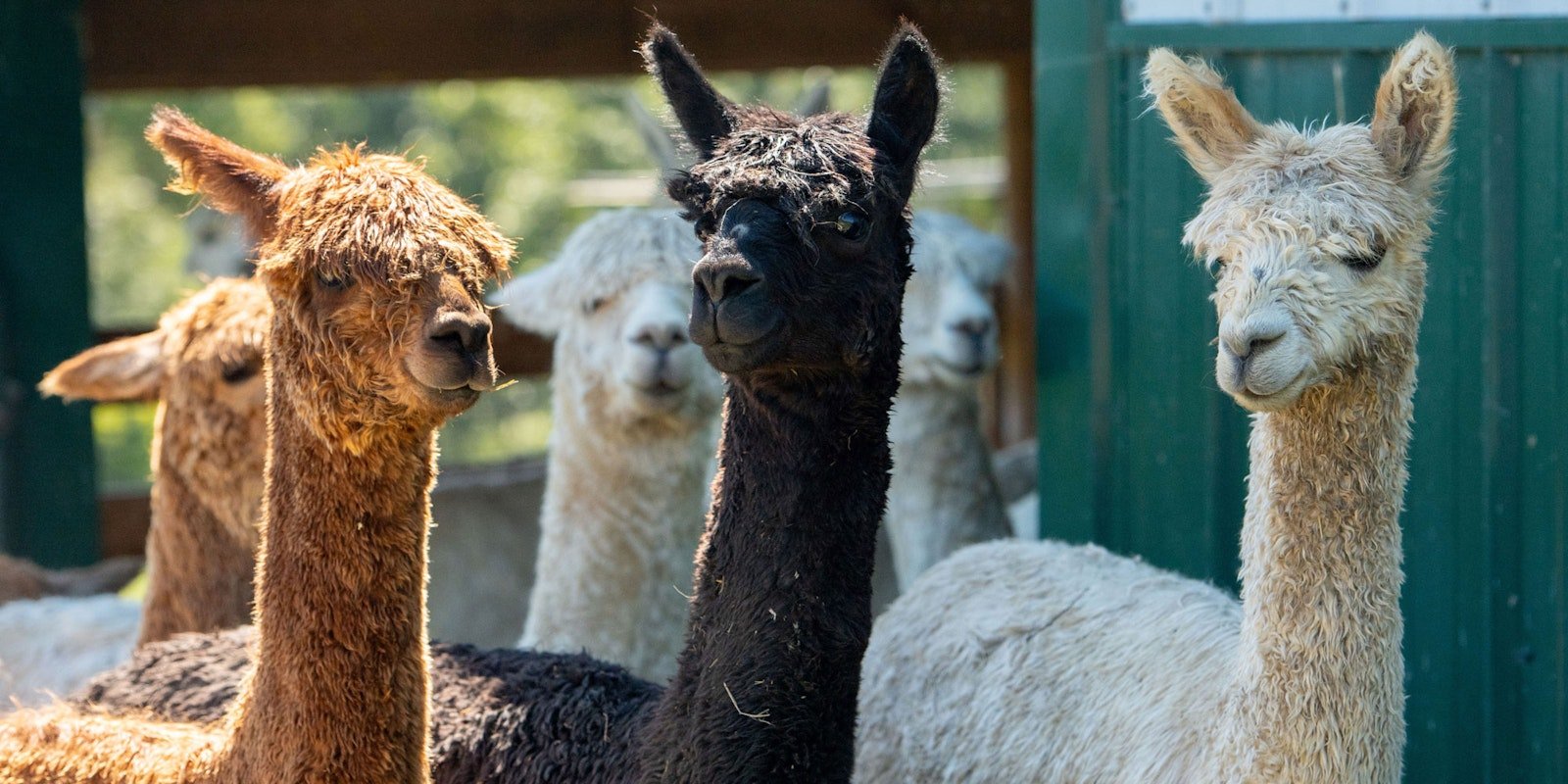About 90% of alpacas or more are of the huacaya type, whose crimpy fiber gives them the classic fluffy look that most of us envision when we picture an alpaca. Given the fewer numbers of suri alpacas, it may not be surprising that few knitters have come across them before. The two types may look similar when recently shorn, but when their fleece grows in, it’s easy to tell suris from their more common huacaya cousins. If huacaya alpacas resemble teddy bears, suris look a bit like Afghan hounds.
 A suri alpaca in full fleece. Photo courtesy of Salt River Alpacas
A suri alpaca in full fleece. Photo courtesy of Salt River Alpacas
A year’s growth of suri alpaca can grow to more than seven inches for a young animal, compared with four to six inches for huacaya. The long, straight fiber has no crimp, giving it exceptional drape and luster; that slick hand can almost make it feel cool to the touch. In other ways, suri has similar qualities to huacaya: insulation, tensile strength, and softness.
Suri on the Needles
Knitters may be forgiven for having never worked with suri yarn, given that many of us have never even seen one, and you won’t come across it in the average farmer’s market. So what can you expect when working with suri fiber?
You’ll most often find suri in a blend—either with wool, where it adds luster and drape, or with silk or bamboo rayon, where it may add warmth or luster, depending on the blend. The length of suri fibers can also add strength. One yarn that has recently come on the market in handdyed palettes combines brushed suri with a mulberry silk binder; the suri creates a soft halo around the shiny silk. Suri yarns that are produced by United States breeders are not brushed, as growers focus on other characteristics of the fiber.
 Young suris can grow seven inches or more of fiber per year. Photo courtesy of Salt River Alpacas
Young suris can grow seven inches or more of fiber per year. Photo courtesy of Salt River Alpacas
When casting on with a skein of suri alpaca yarn, consider how the fiber and pattern will work together best. To take advantage of the drape, choose a project that skims rather than something clingy or form-fitting. A lacy stitch pattern works well, as does a diagonal stitch pattern to help prevent the fabric from growing—think luxurious lace shawl or next-to-skin silky cowl.
You might not find suri alpaca yarns in every yarn store, but it’s worth seeking out to try this supple, silky fiber.

